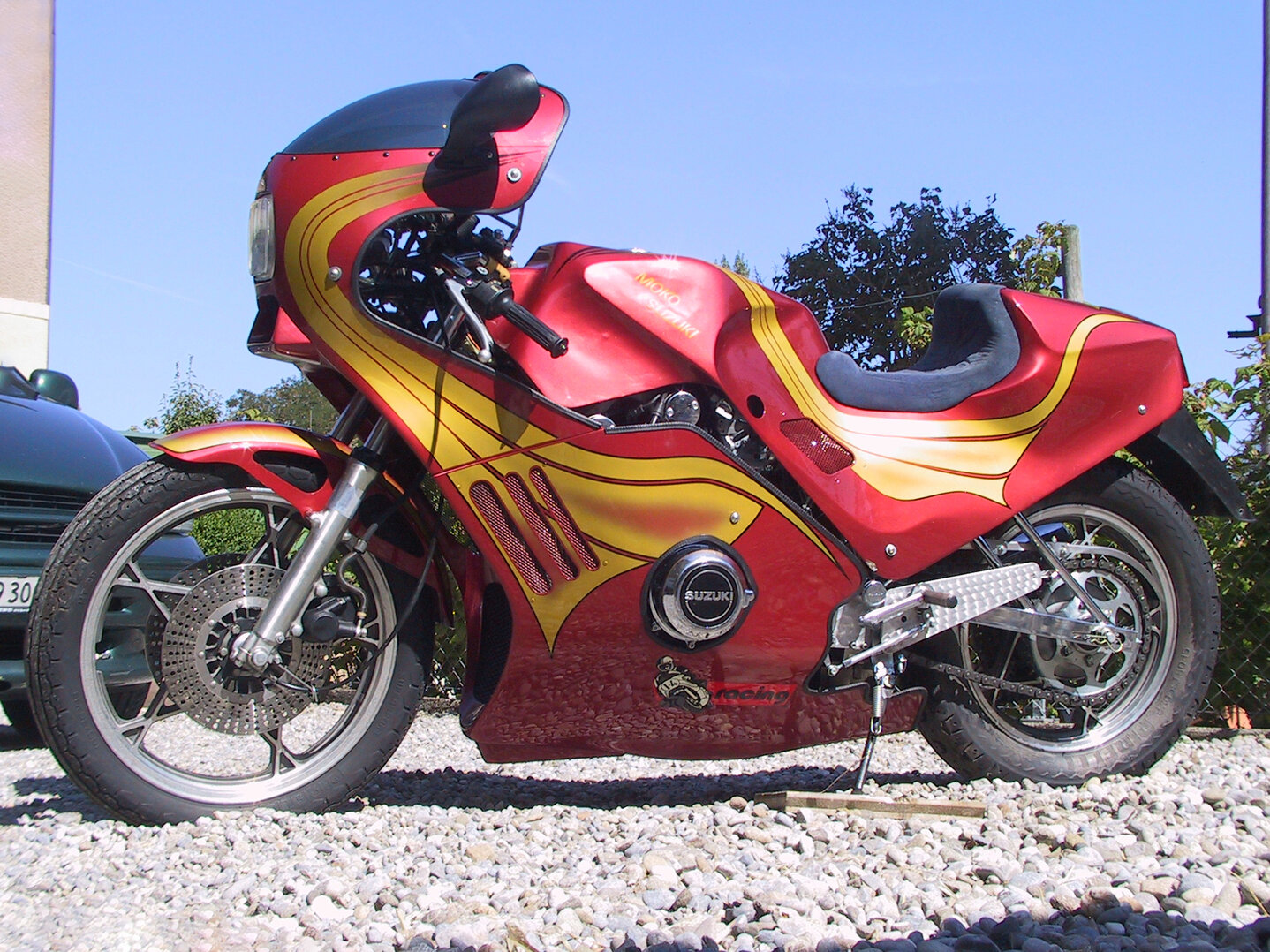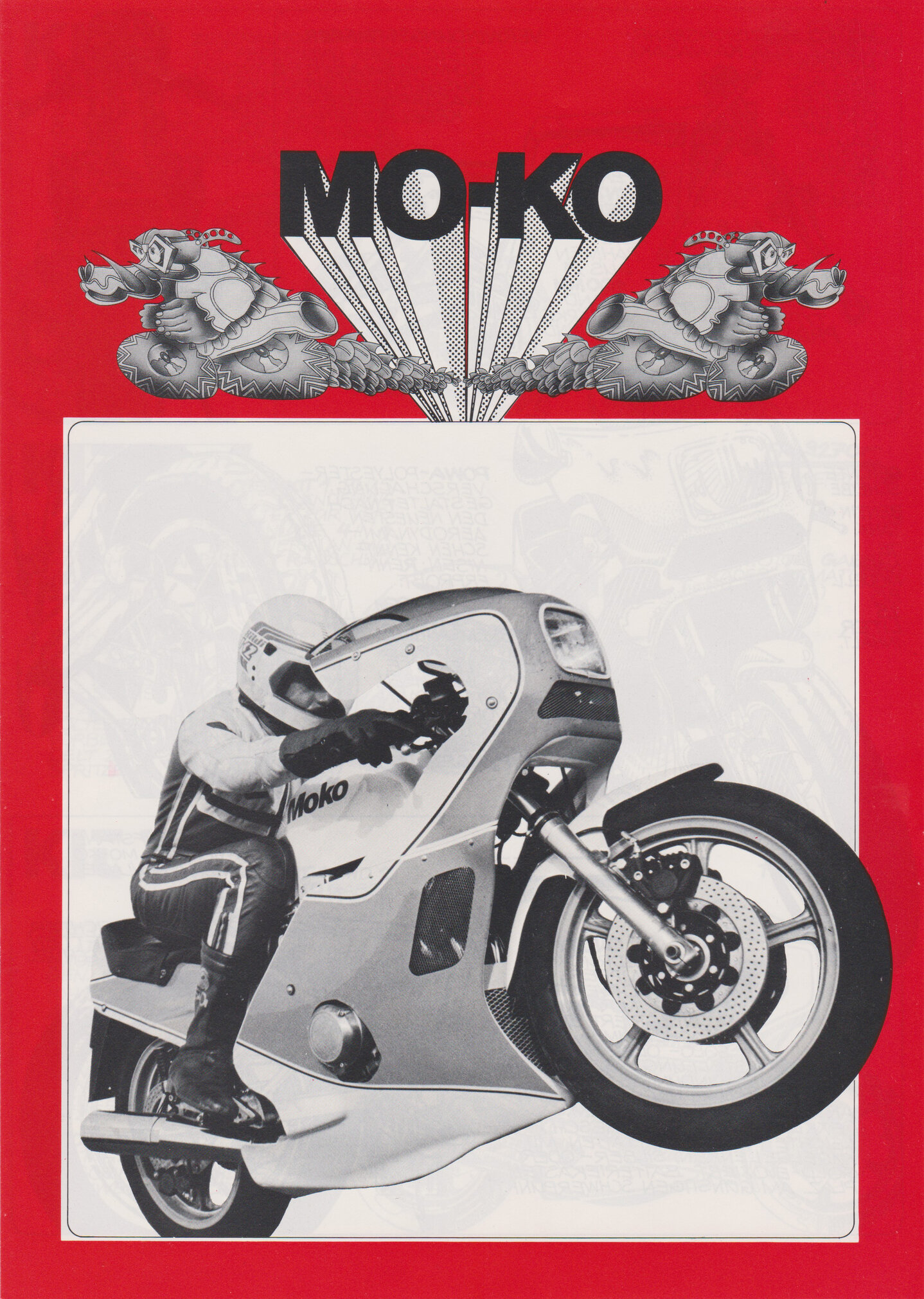
In the wild 1970s, it was mainly the Japanese motorcycle manufacturers Kawasaki, Suzuki and Yamaha that began to build motorcycles with in-line four-cylinder engines. These engines were extremely powerful by the standards of the time. However, the chassis and brakes struggled to keep up with the high performance of the engines. So resourceful companies were needed who were able to eliminate this inequality. One of them was Fritz W. Egli from Bettwil in the canton of Aargau. He began building motorcycles with racing technology for road traffic in 1968.
Alternative drives
Towards the end of the 1970s, Egli's technician Hansjörg Hilti decided to start building exclusive motorcycles himself. Together with Urs Scheidegger and Ernst Strahm, he founded the company Moko (MOtorradKOnstruktion) in Ebikon LU in 1979. The tasks were clearly divided from the outset: Hilti was responsible for development and planning as a technician and designer, Scheidegger was the metalworker and motorcycle mechanic Strahm was the salesman.
At the heart of all Moko machines is a rigid, usually fully chromed central tube frame. With many other options (stronger forks, improved noise protection measures), Moko motorcycles were individually adapted to the customer's wishes. By 1988, around 280 machines had been produced. The company was then sold to Germany, where Moko motorcycles continue to be manufactured to order.
Hommage an Peter Monteverdi
Quality and individuality have always been at the top of Moko's agenda. Ernst Strahm knew how to get the media excited about Moko with great skill. Reports in the trade press and magazines increased the level of awareness. At the International Bicycle and Motorcycle Exhibition in Zurich in 1985, the Moko team presented a Moko Harley to the experts and the public. Harley fans saw the Moko makers as a stinker, while others were almost beside themselves with joy.
Solo or pillion bench seat
The Moko Kawasaki 1000, one of the very first Mokos, dates back to the early days. It has a Kawasaki 1000 MK II engine. The fork was taken from the large series. An interesting feature is the rear end, which comes in the form of two completely interchangeable components: a solo version with a seat for the rider only and a version for two people. Later, instead of complete rear fairings, there were clip-on humps that made it possible to switch from the solo to the pillion seat.
Futuristic veteran
The D01 is probably the most futuristic Moko ever built. It is fitted with a Kawasaki 1000 MK II engine. Underneath the spectacular dress is a normal Moko central tube frame. The Scorpio was first presented to the general public in 1985, initially as an unroadworthy prototype. Ford objected to the use of the name Scorpio, so the lettering was temporarily changed to POWA, the name of the manufacturer of the polyester cladding. Since then, the machine has been repainted several times depending on the occasion and sponsor. The current owner has painstakingly restored the D01 so that it can be presented at the motor vehicle inspection as a veteran vehicle.
From Olivier Burger


